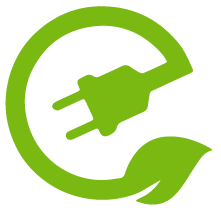Electric bicycles, or e-bikes, have transformed cycling by offering an efficient and eco-friendly mode of transportation. A key decision for e-bike riders is choosing between mid-drive and hub drive motors. Each motor type has unique advantages and drawbacks, making it essential to understand their differences when selecting the right e-bike for your needs.
Mid-Drive Electric Bicycle Motors
1. Power at the Crank
Mid-drive motors are positioned at the bike’s bottom bracket or crank area. This central placement delivers power directly to the chain and rear wheel, providing a natural pedaling experience.
2. Efficient Power Distribution
Because mid-drive motors work with the bike’s gears, they offer more efficient power distribution. This allows riders to maintain a steady cadence when climbing hills or riding on varied terrains.
3. Better Handling and Balance
With the motor’s weight centralized, mid-drive e-bikes tend to have better balance and handling, resulting in a more natural ride.
4. Ideal for Off-Roading
These motors are often preferred for mountain biking and off-road use, where power and control are crucial. Their adaptability to different terrains makes them a great choice for adventurous riders.
5. Cost and Complexity
Mid-drive motors tend to be more expensive and complex compared to hub-drive options. Installation and maintenance may require more effort and expertise.
Hub Drive Electric Bicycle Motors
1. Simplistic Integration
Hub drive motors are built into either the front or rear wheel hub. This design is straightforward, making hub motors a great choice for those seeking a simple, hassle-free e-bike experience.
2. Low Maintenance
With fewer moving parts, hub motors generally require less maintenance than mid-drive motors, leading to lower long-term upkeep costs.
3. Ideal for Everyday Commuting
These motors provide consistent power delivery on flat terrain, making them well-suited for urban commuting. They also tend to operate more quietly, which can be beneficial in residential areas.
4. Limited Efficiency on Inclines
Unlike mid-drive motors, hub drive motors do not use the bike’s gears. This can make them less efficient on steep inclines, requiring more effort from the rider.
5. Weight Distribution Considerations
Since the motor is positioned in the wheel hub, weight distribution can be uneven. This may affect handling, especially on rough or uneven terrain.
Conclusion
Choosing between a mid-drive and a hub drive motor depends on your riding style and preferences. If you frequently ride on hills or rough trails, a mid-drive motor offers superior power, efficiency, and adaptability. However, if you’re looking for a low-maintenance, easy-to-use option for city commuting, a hub drive motor may be the better choice.
The best way to decide is to test ride both types and compare their power delivery, handling, and ride quality. With a wide range of e-bike models available, there’s a perfect option for every rider.

